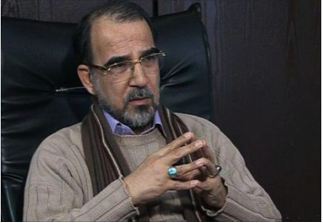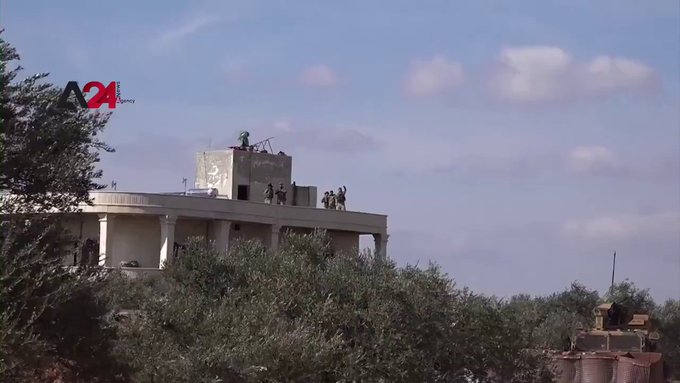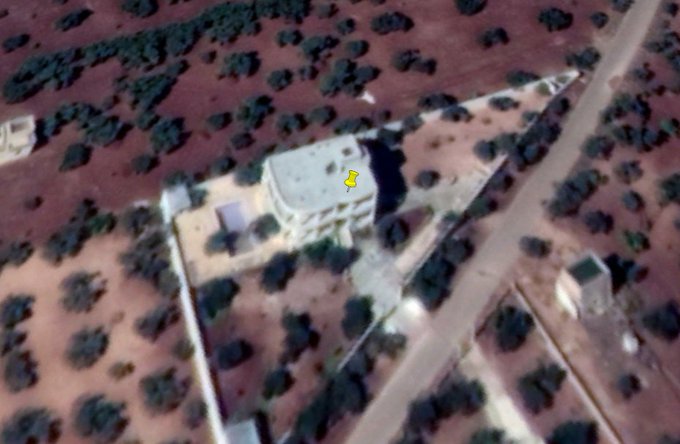منذ تنفيذ الجيوش السوفياتية لعملية أورانوس (Uranus Operation) الاستراتيجية الكبرى، في تشرين الثاني 1942، على جبهات ستالينغراد التي كانت تواجه الغزو الألماني النازي، وهي العملية التي تمكّنت القوات السوفياتية خلالها من فرض الحصار المطبِق على قوات الجيش السادس/ مدرّعات/ الألماني، الذي بلغ قوامه آنذاك 350 الف جندي، وتمّ سحقه وتدميره مع نهاية شهر شباط 1943، أيّ خلال ثلاثة أشهر من العمليات العسكرية.
نقول إنه ومنذ تلك العملية العسكرية السوفياتية، ذات الأهمية والتداعيات الاستراتيجيّة على مسار الحرب العالمية الثانية، لم يحصل أن قام جيش في العالم بتنفيذ عملية شبيهة لتلك العملية السوفياتية، سوى الجيش السوريّ. وذلك عبر الهجوم الاستراتيجي الواسع النطاق في أرياف إدلب الجنوبية الغربية وحماة الشمالية الشرقية واللاذقية الشمالية الشرقية/ جسر الشغور.
وتماماً كما فعلت الجيوش السوفياتيّة في شهر تشرين الثاني 1942، عندما شنت هجوماً شاملاً متزامناً على محاور مدينة ستالينغراد الشمالية والجنوبية، وهي المدينة التي كانت يحتلها الجيش الألماني السادس، بهدف محاصرة تلك الجيوش الألمانية وتدمير قوات الاحتياط العملياتي الذي يدعمها، قام الجيش السوري والقوات الحليفة بتنفيذ خطة شبيهة حيث قام مع القوات الحليفة، وبغطاء جوي روسي ـ سوري كثيف، بما يلي:
1
ـ شنّ هجوماً مركّزاً ومباغتاً تماماً، للعصابات المسلحة وداعميها الأتراك، وذلك بعد تمهيد ناري جوّي ومدفعي صاروخي عنيف، على محاور سهل الغاب/ جبل الأربعين/ جبل شحشبو وسيطر عليها بسرعة قياسية، من خلال عملية نوعية أشبه ما تكون بعملية قوات خاصة، مع فارق طول الجبهة، وهو يقارب 45 كيلومتراً، وحجم القوات الذي استخدم لتنفيذ العملية العسكرية السورية بنجاح.
2
ـ وقد نجح الجيش السوري وحلفاؤه، عبر هذه المناورة الاستراتيجيّة الضخمة، بالسيطرة النارية على طول الطريق الدولي السريع، حلب اللاذقية والمسمّى طريق M 4، وذلك تمهيداً للسيطرة الفعلية المباشرة عليه في مرحلة لاحقة من مراحل تنفيذ الخطة.
فبسيطرته على جبل الأربعين يكون الجيش السوريّ قد أسقط كلاً من أريحا وقاطع الطريق الدولي M 4، من نصيبين شرقاً (شرق أريحا) وحتى أوروم الجوز جنوب المدينة، أيّ أنه قد قطع خط إمداد المسلحين المقبل من سهل الغاب ومن جهة جسر الشغور. كما انّ سيطرته على جبل شحشبو قد جعلته يسيطر نارياً على كلّ من المدينة وقسم من الطريق الدولي M 4 شرق وغرب المدينة. وبالتالي فإنّ الجيش السوري، وتحت غطاءٍ جوّي روسي سوري كثيف، قد تمكن من إقامة رؤوس جسور، امتدّت من بلدة سراقب شرقاً وحتى بلدة كأمور تحتاني غرباً (غرب جسر الشغور)، تماماً كما فعل المارشال السوفياتي شوكوف، سنة 1942 في معركة ستالينغراد، عندما بدأ تنفيذ خطته بإقامة رؤوس جسور شمال وجنوب ستالينغراد، معتمداً على الجيوش السوفياتية: السابع والخمسين والثاني والستين والرابع والستين في محاور المدينة الجنوبية، وعلى الجيوش: الثالث والسادس والأول في شمال المدينة، وذلك استعداداً لبدء الهجوم الشامل لتحرير المدينة مع بداية شهر كانون الأول 1942.
وما أن تمكنت الجيوش السوفياتية من فرض الحصار الكامل، على الجيش الألماني السادس، الذي كان يحتلّ مدينة ستالينغراد، حتى قرّرت القيادة العسكرية الألمانية العامة الزجّ بالجيش الألماني المدرّع الرابع، الذي كان منتشراً على محور كاربوفكا (karpovka) في القاطع الجنوبي من غرب المدينة (غرب نهر الفولغا) ويقابله الجيش السوفياتي الرابع والستون.
تحرّك الجيش المدرّع الألماني الرابع، بناءً على أوامر القيادة العامة في برلين، في محاولة لفك الحصار عن الجيش السادس. تماماً كما تحرّكت الوحدات المدرّعة التركية، يوم الأربعاء 26/2/2020، في محاولة منها لفكّ الحصار الذي ضربه الجيش السوري على بعض مجموعات المسلحين، الذين سبق وأنْ استدرجهم الى كمين استراتيجي كبير في سراقب، قبل ذلك بأربع وعشرين ساعة، من ناحية أبعاده ونتائجه على سير المعارك، (الكمين) على طول مسرح العمليات، من سراقب حتى غرب جسر الشغور.
ولكن طلائع قوات الجيش السوفياتي الرابع والستين سرعان ما انقضّت على وحدات الجيش الألماني الرابع المدرّعة، فور محاولتها بدء هجومها المضاد، الأمر الذي لم يستغرق وقتاً طويلاً حتى تمّ سحق الجيش الألماني المدرّع الرابع تماماً.
وهذا بالضبط ما حصل مع القوة المدرّعة التركية، قوامها لواء مدرّعات، معزّز بكتيبة مدفعيّة ميدان ثقيلة وكتيبة مدفعيّة صاروخية، من طراز ( MLRS ) multiple Launch rocket System، في خطوطها الخلفية. تلك القوة التي كانت تتحرك في محيط بلدة بارَه، متجهة إلى سراقب، عندما تصدّى لها سلاح الجو السوري وشنّ عليها أربع غارات جوية أدّت الى تدمير مجموعة من دباباتها وراجمات الصواريخ التركية وقتل وجرح من فيها، خاصة أنّ الجيش السوري كان في أوْج عملياته ضدّ مجموعات المسلحين التي تمّ استدراجها إلى محيط مدينة سراقب.
أما عن خلفيات وتداعيات الانتصارات، التي حققها الجيش السوري خلال الأسبوع الأخير والانهيارات التي شهدتها جبهة أردوغان ومحازبيه، من جبهة النصرة والحزب التركستاني وكلّ المتطرفين الإرهابيين التركستانيين الذين حشدهم أردوغان أملاً منه في خلق عثمانستان جديدة، فلا بدّ من الإشارة إلى ما يلي:
1
ـ انطلاقاً من قناعة أردوغان العميقة بانتهاء الحرب التي شنّت على سورية، والذي كان نظامه كما النظام الأردني، رأس حربة فيها، وبأنّ المشروع الذي شارك في تنفيذه منذ اللحظة الأولى، الذي كان يهدف الى تفتيت الدولة السورية وتمزيق أراضيها، قد انهار وفشل وانّ استكمال تحرير الأراضي السورية، بما فيها تلك التي تحتلها القوات التركية، لا يتعدّى كونه مسألة وقت ليس إلا، وفي ظلّ التقدّم السريع الذي يحرزه الجيش السوري، في مسرح العمليات في الشمال السوري، قام أردوغان بإطلاق تهديداته للجيش السوري، بعنجهية لا تستند الى أيّ مرتكزات حقيقية، مطالباً إياه (الجيش السوري) بالتراجع عن الأراضي التي تمّ تحريرها من سيطرة أردوغان ومجموعاته الإرهابية المسلحة.
وقد وصل به الأمر الى أن يرفق تهديداته تلك بموعد زمني هو آخر شهر شباط الحالي، اعتقاداً منه انّ بإمكانه تنفيذ عملية عسكرية سريعة يستطيع من خلالها استعادة السيطرة على المناطق التي حرّرها الجيش العربي السوري، سواء في أرياف حلب أو أرياف إدلب، علاوةً على اعتقاده بأنّ ذلك سيؤدي الى إمكانية مواصلة سيطرته على بقية محافظة إدلب ومدينة إدلب نفسها.
2
ـ كانت أوهام أردوغان هذه تهدف الى، تعديل صيغة سوتشي بالقوة وعن طريق تغيير موازين القوى العسكرية الميدانية، وذلك لتأمين عودة قوية، له وللإرهابيين الذين يدعمهم، الى العملية السياسية التي نقف على أعتابها، بعد فشل المشروع الصهيوأميركي، في إسقاط الدولة الوطنية السورية.
وهو ما دفعه الى أن يزجّ بفرقة مدرعةٍ ولواءي مدفعية ميدان ثقيلة ولواء قوات خاصة تركية، الى داخل الحدود السورية، سواءً في أرياف حلب الشمالية او أرياف إدلب المختلفة، بالإضافة الى فرقة دبابات معززة بفرقة مشاة محمولة (مؤللة) أيّ محمولة بناقلات جنود، على الحدود التركية السورية، في محافظة الإسكندرون السورية المحتلة منذ عام 1939.
3
ـ كانت خطة الجيش السوري تسير بشكل جيد، في ما عدا بعض الفقاعات الصوتيّة الفارغة، الواردة من الشمال، كما قال الرئيس السوري بشار الأسد، منذ إطلاقها قبل ما يزيد عن ثلاثة أشهر، وكانت القيادة العسكرية السورية، وبتنسيق كامل مع القيادة العسكرية الروسية وحلفاء الدولة السورية، تضع في حسبانها بأنّ أردوغان، الخارج من الميدان السوريّ مهزوماً، سوف يعمد الى خطوات تهدف الى قلب المعادلة وخلط الأوراق من جديد، بما في ذلك لجوؤه للقيام بمغامرة عسكرية في محافظة إدلب او محافظة حلب.
وبناءً على هذه القناعة اتخذت القيادة العسكرية الروسية السورية، أو بالأحرى غرفة العمليات المشتركة، القرار المناسب، بالتصدّي لأيّ محاولات عبثية لأردوغان وبالقوة المسلحة، منعاً له من أن يعبث بانتصارات الدولة السورية.
4
ـ وتماماً كما فعل هتلر، في بدايات شهر نيسان 1945، عندما كانت جيوش الاتحاد السوفياتي تقف على أبواب برلين، بقيادة المارشال شوكوف (الذي قاد معركة ستالينغراد أيضاً)، أصدر أمراً لبقايا قواته بشنّ هجوم مضاد، لمحاولة وقف الزحف السوفياتي على برلين، وفشلت الجيوش الألمانية في تحقيق ذلك.
وها هو أردوغان، وأدواته المهزومة في الميدان السوري، يحاولون وفي آخر لحظة، وبينما الجيش العربي السوري يقف على أعتاب إدلب، يحاولون وقف زحف هذا الجيش، ويتورّطون في مغامرة عسكرية، بهجومهم على مدينة سراقب والذي سينتهي بإبادة تامةٍ لكلّ المجموعات الإرهابية التي شاركت في هذا الهجوم. وهي العملية التي يقوم الجيش السوري وحلفاؤه باستكمالها حالياً.
5
ـ وبناءً على خطة الجيش السوري العملياتية، التي أخذت بالحسبان احتمال ارتكاب مغامرة من قبل أردوغان، وفي اللحظة التي بدأ فيها أردوغان بتنفيذ مغامرته، يوم أول امس الخميس 27/2/2020، قام سلاح الجو السوري ومعه سلاح الجو الروسي والقيادة العسكرية والسياسية الروسية، وبعد تمهيد سياسي دبلوماسي منقطع النظير، من قبل الرئيس الروسي، نقول إنّ سلاح الجو السوري قام بقطع أيدي أردوغان وأرجله، برسالة جوية صاروخية نارية، جعلته يجثو على ركبتيه أمام الرئيس الروسي فلاديمير بوتين، راجياً إياه وقف قصف القوات التركيّة ومؤكداً له (لبوتين) التزامه بالتطبيق الحرفي الدقيق لاتفاقيات سوتشي.
6
ـ وهذا يعني أنّ أردوغان سيخضع من الآن فصاعداً، وبعد فشل مغامرته العسكرية في ريف إدلب الجنوبي، لما يقرّره الرئيسان الروسي والإيراني ويقبله الرئيس السوري. وهنا يجب القول بأنّ أردوغان لم يعُد ضامناً لاتفاق سوتشي وانما أصبح شخصاً محجوراً (خاضعاً للحجر) عليه إلى أن يقضي الله أمراً كان مفعولاً…
تماماً كما حصل مع قائد النازية الألمانية، أدولف هتلر، بعد فشل هجومه المضاد الأخير الذي بدأه يوم 16/4/1945 وانتهى بانتحاره يوم 30/4/1945. والفارق الوحيد بين الاثنين أنّ أردوغان لا يمتلك الشجاعة للإقدام على وضع حدّ لحياته الإجرامية، وإنما سيتولى هذه المهمة جنرالات من الجيش التركي، أكثر حرصاً على تركيا ومصالحها القومية العليا، من هذا اللصّ الدولي الذي لا يهمّه سوى مصالحه الشخصية هو وأبناؤه وأنسباؤه. وما زيارته الاستفزازية الأخيرة الى أوكرانيا إلا أوضح دليل على ذلك. اذ انّ السبب الاساسي للزيارة هو تأمين تكنولوجيا أوكرانية لصناعة الطائرات بدون طيار وهي الصناعة التي يسيطر عليها زوج ابنة أردوغان، سميّة أردوغان، المدعو سلجوق بيرقدار.
لذا فمن المرجّح، خاصة بعد ما تعرّض له الجيش التركي من خسائر بشرية، في جنوب إدلب، ان يقوم رهط من الجنرالات الأتراك المعارضين لمغامرات أردوغان بتنظيم انقلاب عسكري يطيح بأردوغان لينتهي إما قتيلاً وإما سجيناً.
وهنا لا بدّ من الاشارة الى انه قد سبق السيف العذل. فلن تفيد أردوغان، في وجه معارضيه داخل المؤسسة العسكرية التركية بشكل خاص، توسّلاته للرئيس الروسي بأن الجيش التركي سيلتزم بالتواجد فقط وحصراً. بشكل قطعي في نقاط المراقبة الاثنتي عشر المتفق عليها في سوتشي، وهو ما أبلغ به أردوغان الرئيس فلاديمير بوتين خلال مكالمته الهاتفيه معه ظهر أمس الجمعة 28/2/2020.
بعدنا طيّبين، قولوا الله…
River to Sea
 Uprooted Palestinian
Uprooted Palestinian
The views expressed in this article are the sole responsibility of the author and do not necessarily reflect those of the Blog!









